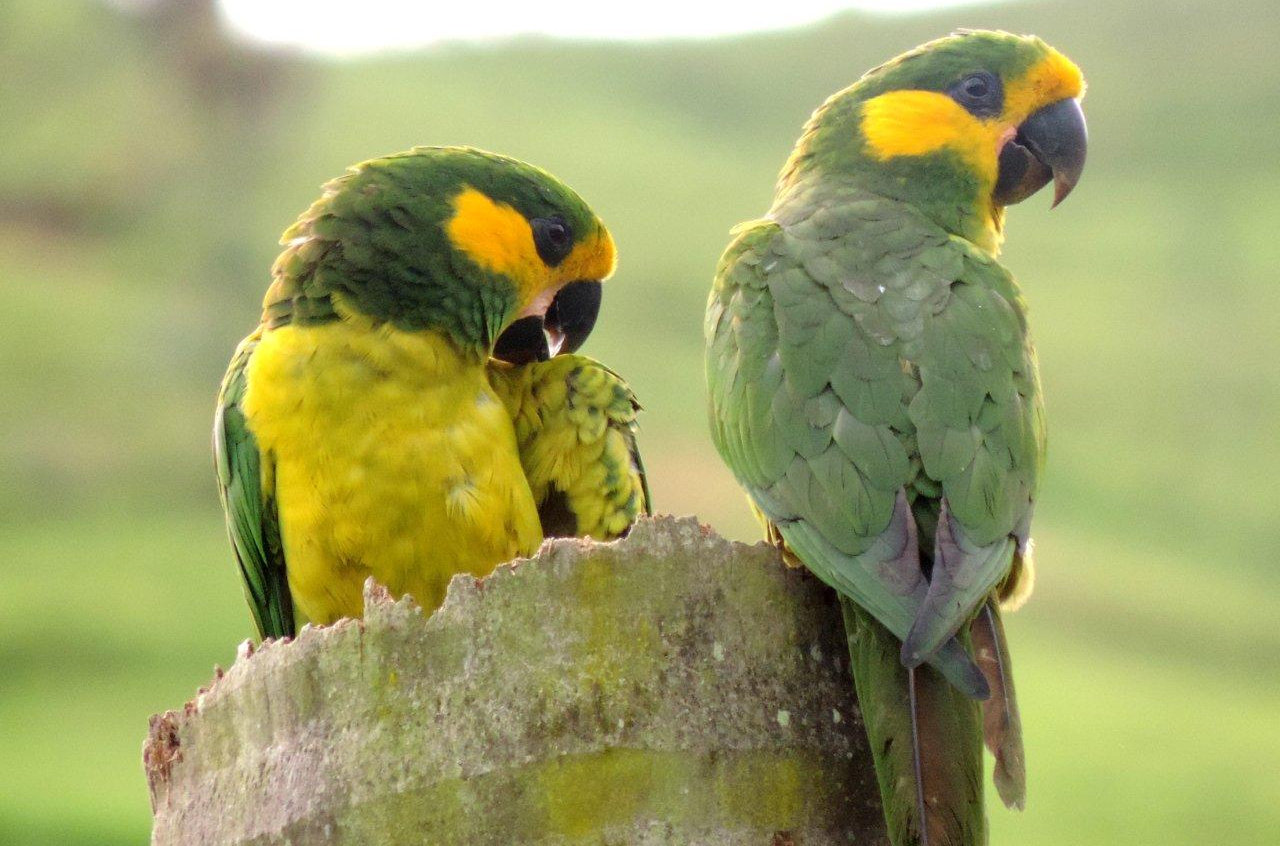Although more than 8,000 kilometres separate the Canary Islands from Colombia, the Yellow-eared Parrot has a vital link with the Archipelago: the conservation work carried out by The Loro Parque Foundation to protect the species, which has contributed to its successful recovery.
The participation of the Foundation in the project to save the Yellow-eared Parrot, together with the ProAves Foundation of Colombia, has been fundamental in the achievement that today the wild population of these birds has multiplied and has reached record numbers. The story that has marked their survival began in the mid-1990s, when the Loro Parque Foundation supported the protection of the last 20 birds in Ecuador. In 1988 they had disappeared and it was feared that the species had become completely extinct; however, in the same year the Ognorhynchus project began with the aim of ensuring the survival of the species and its habitat in the Colombian Andes.
After a year-long search, a population of 81 individuals was found in the central Andes, in the community of Roncesvalles, whilst in January 2001 a second population of 63 individuals appeared in the foothills of the western Andes in Jardín, in the Department of Antioquia. In the years since the collaboration began, the Foundation has been the principal architect of an initiative that may become the most successful in all of South America. And, in fact, such has been the recovery rate that in 2010 the International Union for Conservation of Nature (IUCN) reduced the Yellow-eared Parrot’s threat category from ‘critically endangered’ to ‘endangered’.
This animal has a close relationship with wax palms, Colombia’s national tree, also threatened by cattle grazing and by its indiscriminate use in the celebration of Palm Sunday. Years of research into habitat use, diet, distribution, and reproductive behaviour have provided a solid foundation on the threats to the species and the wax palm, thus enabling a global conservation action plan.
Among the different initiatives implemented within the framework of this project, they were also able to count on the collaboration of the Vatican. In spite of the roots of this religious tradition, the close collaboration of the Church and a good educational programme have made it possible for everyone to use other alternatives today.



